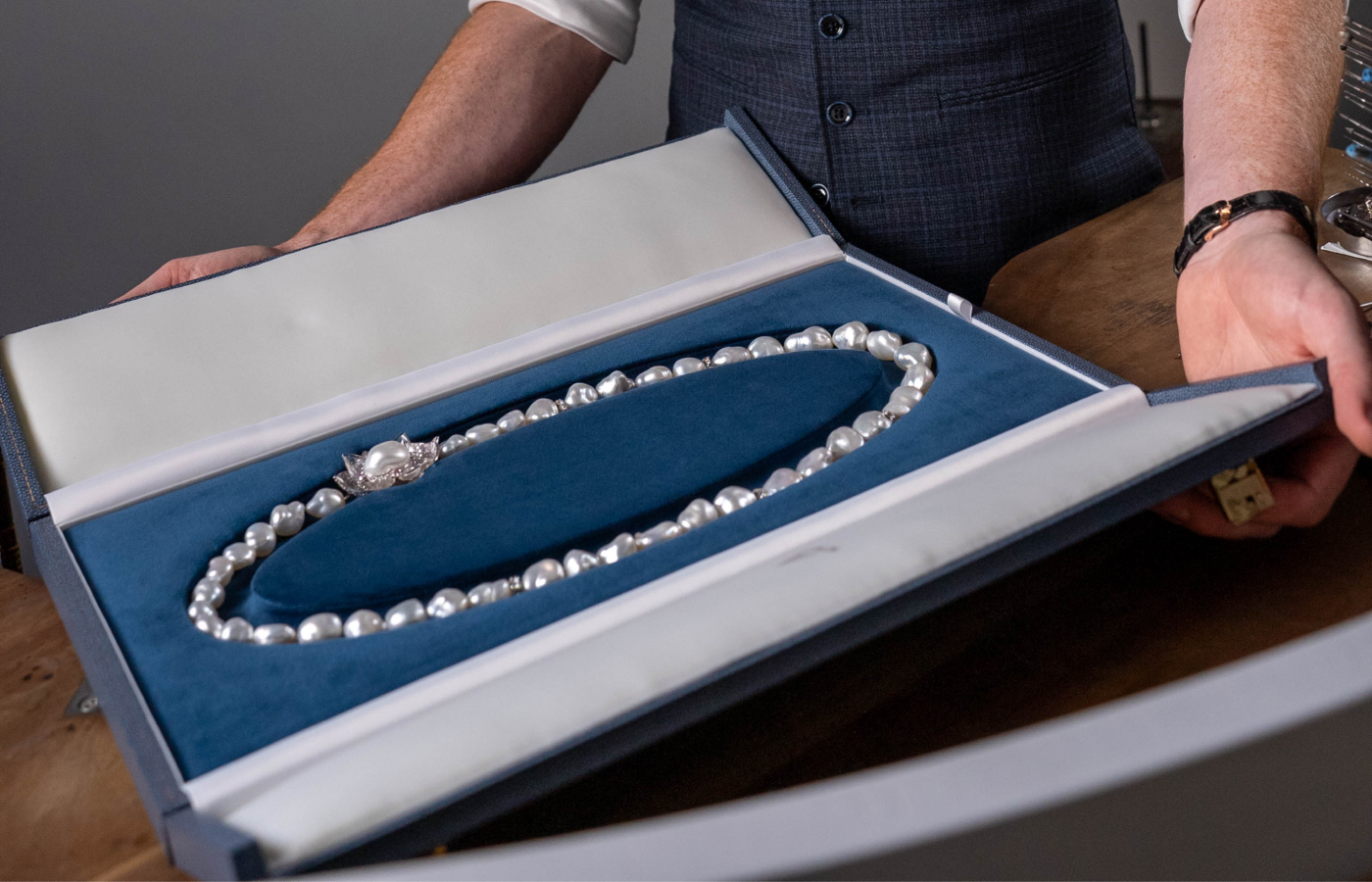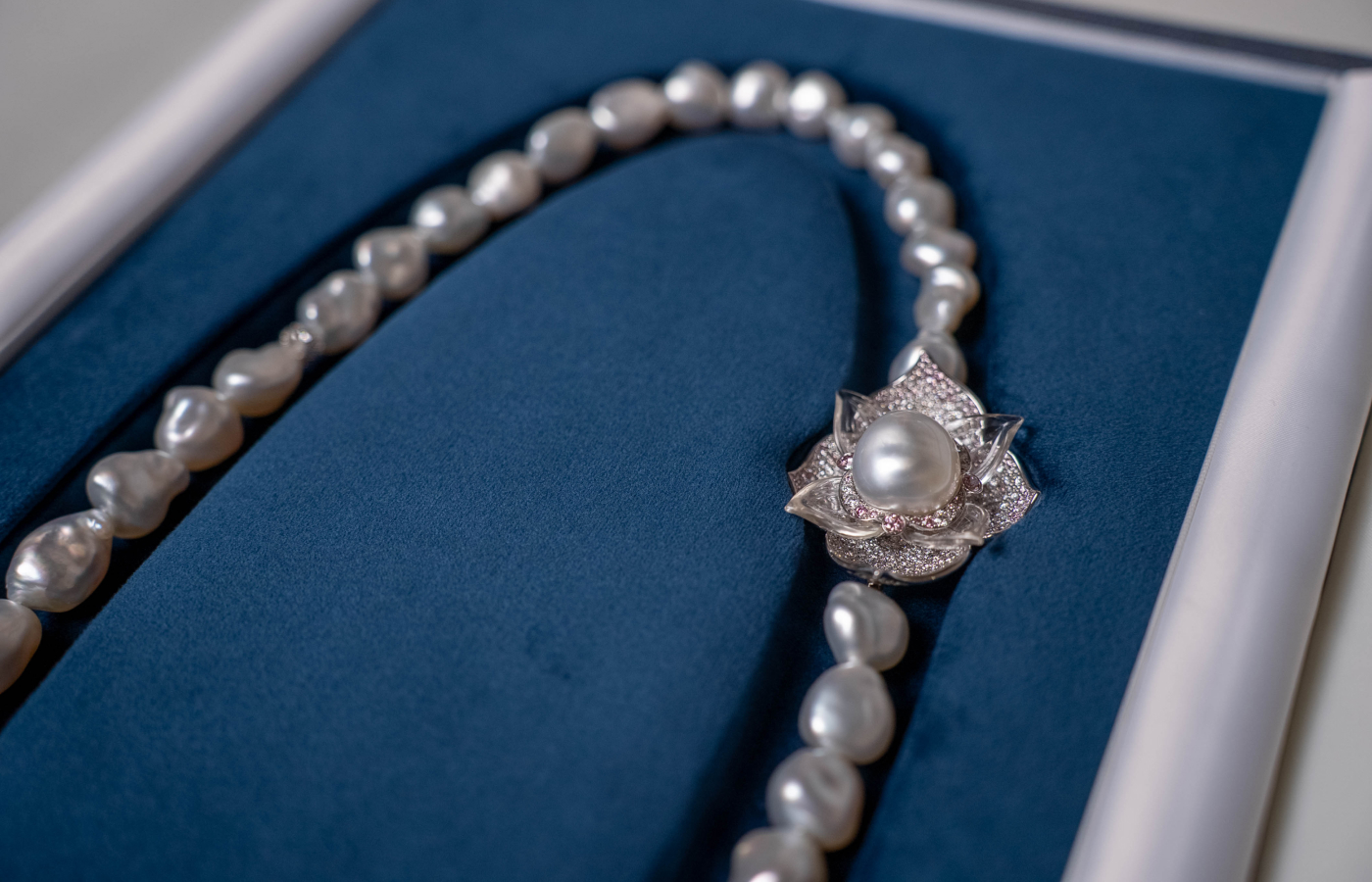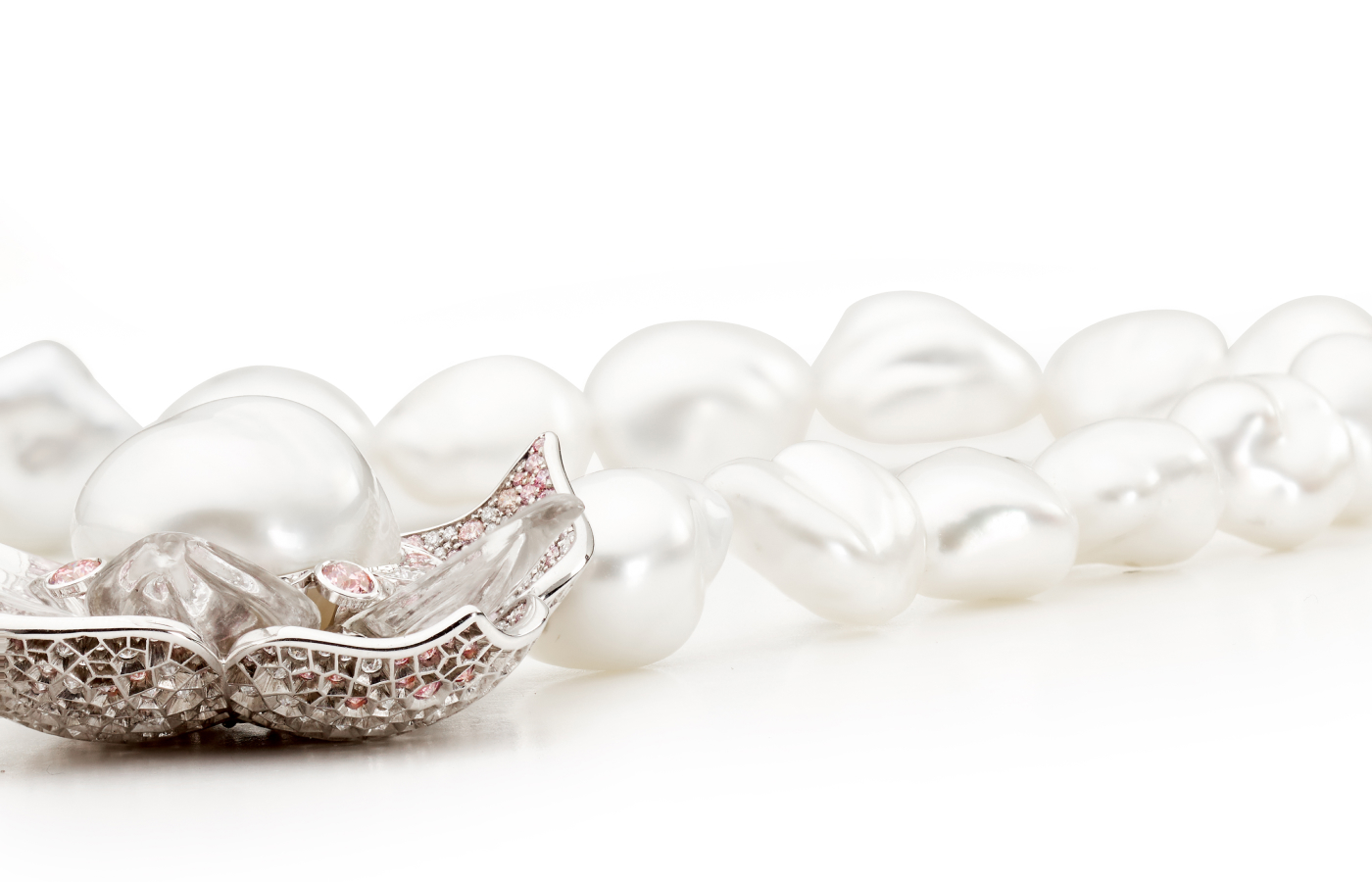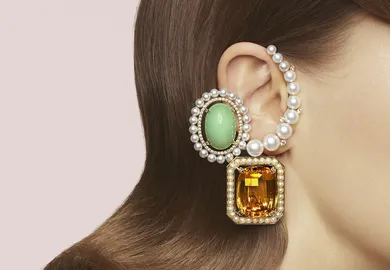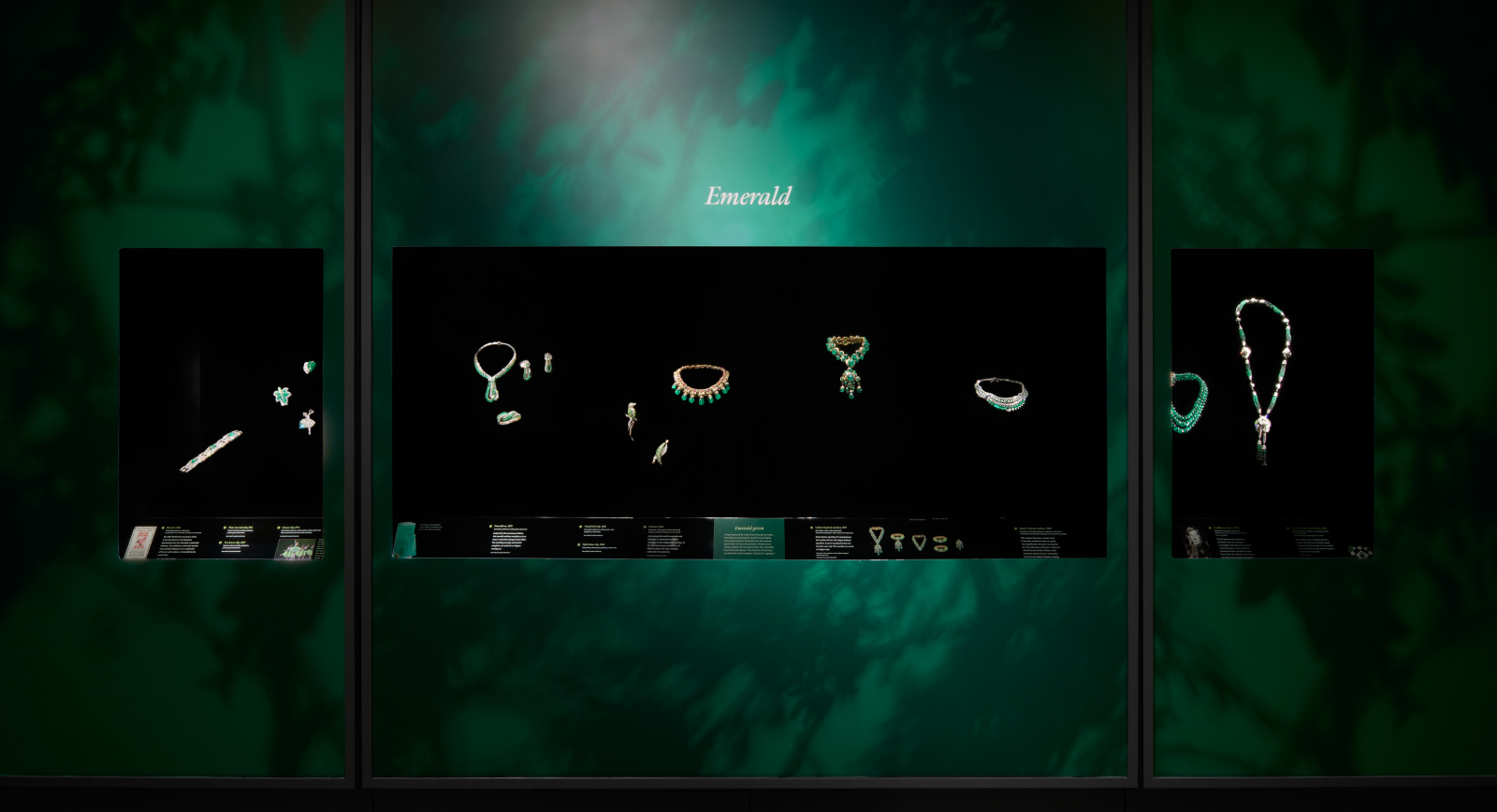
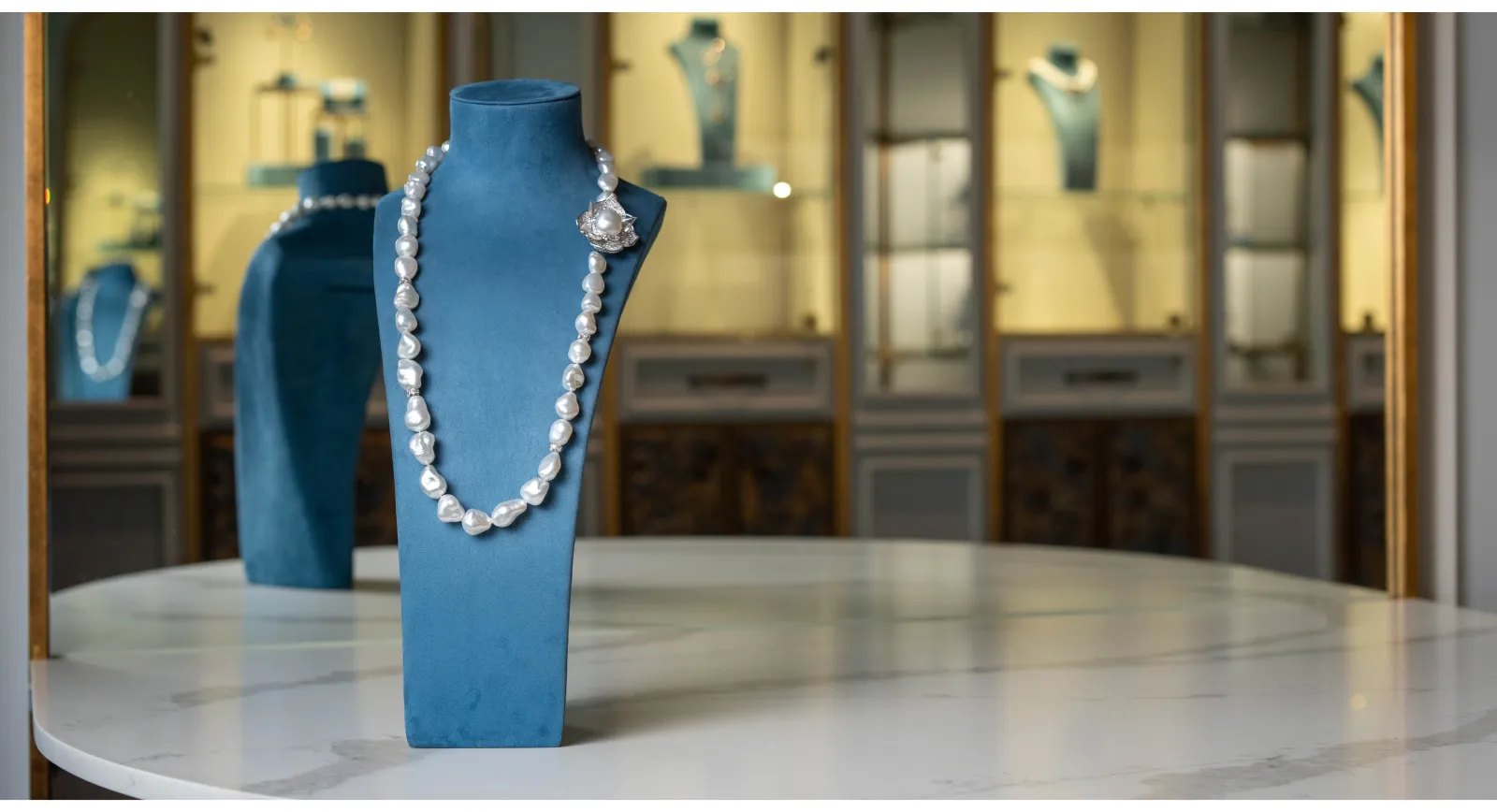
Australian Masterpiece: The Iluka Keshi Pearl Necklace by Matthew Ely
One of the most overlooked qualities of exceptional high jewellery is patience. Sometimes it can take years to source the perfect materials to bring a vision to life. Recently, I had the pleasure of speaking to Australian jeweller Matthew Ely, who has spent 17 years fashioning an extraordinary necklace of South Sea Keshi pearls that’s undoubtedly one of the largest and longest known strands in the world. Here, I am pleased to provide a closer look at this career defining achievement…
Before we dive into the Iluka necklace, let me share a little about Matthew Ely with you. He’s a creative storyteller, no doubt, producing wearable works of art from his studio in Woollahra, Australia. At his flagship store in Sydney, you’ll find pieces infused with minerals and materials that are tied to Australia and its surrounding oceans, such as Argyle Pink diamonds and South Sea pearls, paired with global wares like rubies, sapphires, emeralds, morganites and aquamarines.

Matthew Ely in the process of creating the Iluka necklace with 42 rare South Sea Keshi pearls and Argyle pink diamonds
I think what I appreciate most is Matthew’s colour combinations – blue sapphires and tsavorite garnets, mint green tourmalines with deep orange-yellow citrines, peach topazes with lavender sapphires – and also his “little something extra” approach to classical, wearable designs. A phrase that really stands out on his website is “expect the unexpected”, and this really does encapsulate his designs. They’re recognisable, yet subtly different. Classical without being staid. They’re heirlooms in the making!
And speaking of ‘unexpected’, I was definitely not anticipating the Iluka necklace when it first appeared online! I struck up a conversation with Matthew on Instagram about the piece, and the more I discovered, the more I wanted to write an article about its scale and, most notably, its ambition. The Iluka necklace, whose name is derived from an Aboriginal word meaning ‘near the sea’, was 17 years in the making, with 13 of those years spent sourcing the Keshi pearls and another four producing the final design concept. In total, it required more than 700 hours of handmaking, featuring 42 rare South Sea Keshi pearls (14.33mm to 19.43mm) from Broome, 149 Argyle pink diamonds for a weight of 3.91 carats, four hand-carved rock crystal petals from the White Rock Quarries in South Australia, and a further 564 colourless diamonds of 15.53 carats. No wonder Matthew describes the piece as “a truly Australian design”.

The Iluka necklace by Australian jeweller Matthew Ely with South Sea Keshi pearls, Argyle pink diamonds, colourless diamonds and rock crystal
He explains: “I have always been inspired by Keshi pearls – their uniqueness, asymmetric beauty, and remarkable lustre. For four years, Iluka was always on my mind, but this was never a project that could be hurried. Keshi pearls aside, the piece contains four perfectly matched Argyle pink diamonds, which needed to be considered and sourced over time. I took it step by step, focusing on the intricate details – from azure piercing the brooch to hand-carving the inside of the rock crystal petals to setting the diamonds. It was certainly an exercise in patience, but I never thought about giving up.”
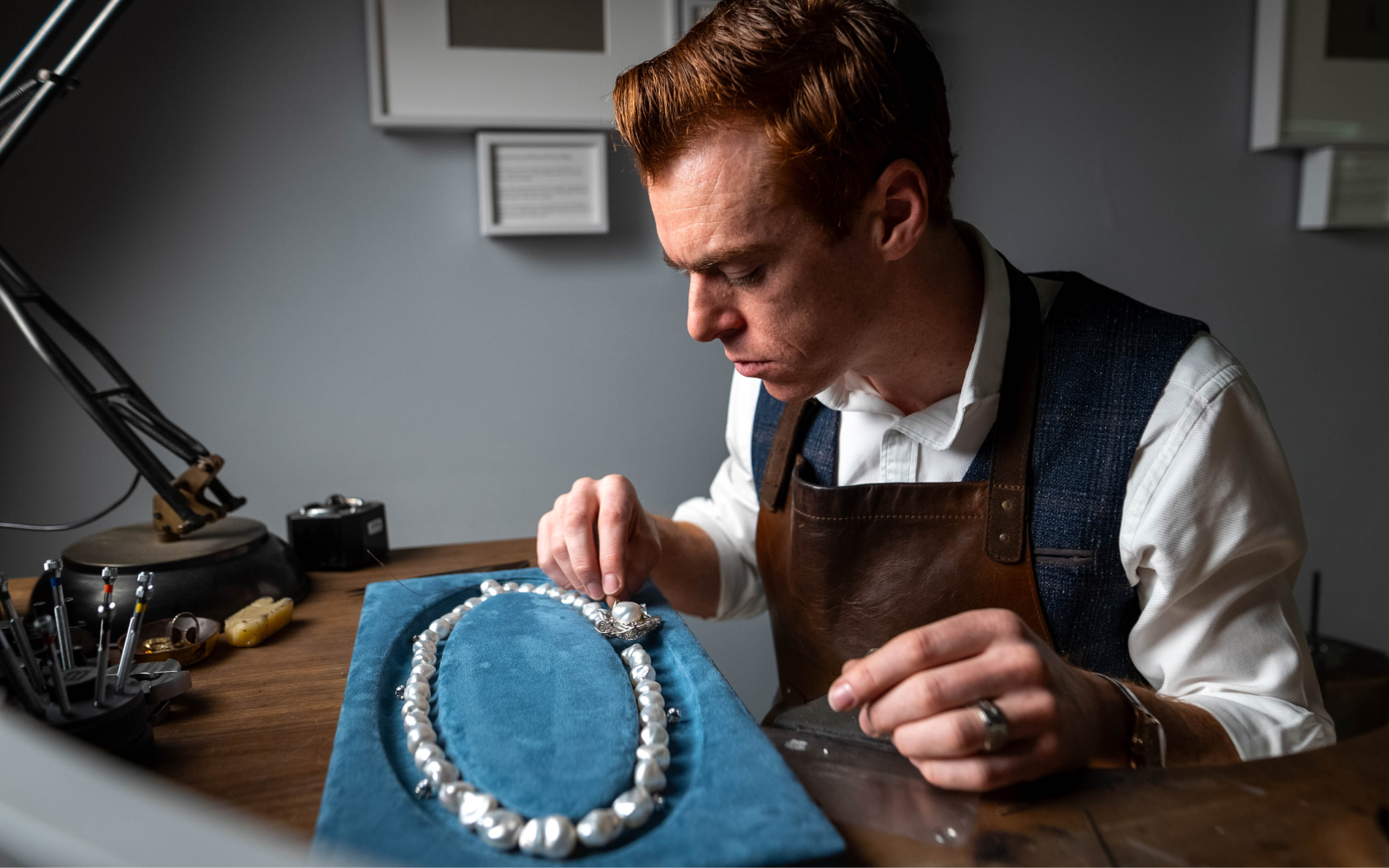
Matthew Ely inspects his masterpiece Iluka necklace, which was 17 years in the making
The Iluka design incorporates two distinctive elements: the eye-catching and world-leading strand of Keshi pearls and the detachable Lotus Flower Brooch-Pendant, which Matthew describes as a “symbol of purity, resilience and spiritual enlightenment”. It’s crafted with hand-carved quartzes, an Argyle pink diamond cluster and a single Keshi pearl accent. For context, the ‘average’ Keshi pearl is 2-8mm, so each of the pearls in the Iluka is at least double this size! Now imagine trying to find 42 of them with perfectly matching colour, shape and tone… “That’s a once in a lifetime,” Matthew says.
While a round South Sea pearl is a natural miracle, a Keshi is significantly rarer. These Baroque gems are completely solid and made of pure nacre. They’re often referred to as ‘nature’s happy accidents’. – Matthew Ely
In case you are not familiar, Keshi pearls are named after the Japanese word for ‘poppy seed’ and are generally small and irregularly shaped. They’re described as “accidents” because of how they form in nature as a by-product of the pearl culturing process. An oyster can reject an implanted nucleus but retain the mantle tissue that was originally inserted for the creation of the pearl sac. This enables the oyster to continue to secrete nacre, which in turn forms the Keshi pearl and a nuanced lustre. Matthew suggests they are the closest one can get to a “natural pearl from the farm environment with an allure very different to that of a nucleated, cultured pearl”.
It’s also worth noting that the Argyle pink diamonds featured in this piece hail from the now closed Argyle Pink Diamond Mine in East Kimberley, Western Australia, which adds to their rarity. During its 27-year history, this mine was responsible for 90% of the world’s pink diamonds and, now that it has closed, there’s increased demand for precious pinks from this exact location. I also appreciate the way the carved rock crystal petals act similar to a magnifying glass – intensifying the size and hue of the diamonds underneath. Matthew adds: “It’s a really interesting and unique dimension change. Like everything else in Iluka, the aim was really to push the boundaries of what’s possible. The result is a piece that can be worn in three different ways – a single Keshi pearl necklace, the pink Lotus Flower brooch, or the full ensemble. Just like the design itself, it leaves room for creativity. There are no limits.”
This latest Matthew Ely masterpiece has all the elements I look for in a high jewel: rare and unusual materials, patient and meticulous craftsmanship, attention to detail, and transformable elements that can be worn in different ways. I can only imagine how it will feel to wear this sumptuous strand of Keshi pearls, knowing few others will ever compare.

WORDS
Katerina Perez is a jewellery insider, journalist and brand consultant with more than 15 years’ experience in the jewellery sector. Paris-based, Katerina has worked as a freelance journalist and content editor since 2011, writing articles for international publications. To share her jewellery knowledge and expertise, Katerina founded this website and launched her @katerina_perez Instagram in 2013.






